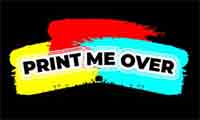In the digital world, images play a crucial role in communication, expression, and storytelling. Various image formats have evolved over time to cater to different needs, ranging from web graphics to high-quality print. This article will delve into the most common image formats, exploring their unique features and applications in various scenarios.
JPEG (Joint Photographic Experts Group): JPEG is the most widely used image format, known for its excellent compression capabilities. It is ideal for photographs and images with a wide range of colors and complex details. JPEG files are commonly used for web graphics, social media, and digital photography due to their relatively small file sizes and high compatibility.
PNG (Portable Network Graphics): PNG format supports lossless compression, making it perfect for images that require transparency or sharp edges. With its ability to preserve background transparency, PNG is widely used for logos, icons, and images with text overlays. However, the lossless nature of PNG results in larger file sizes compared to JPEG.
GIF (Graphics Interchange Format): GIFs are simple animations created by combining multiple frames into a single file. They are well-suited for short, looping animations, making them popular for web graphics, memes, and social media content. GIFs have limited color support, which makes them less suitable for high-quality images.
TIFF (Tagged Image File Format): TIFF is a lossless format commonly used in professional photography and printing industries. It retains all image data without compression, resulting in large file sizes. TIFF files are excellent for archiving high-resolution images and ensuring the preservation of image quality during editing.
BMP (Bitmap Image): BMP is a straightforward image format that stores color data for each pixel without compression. It is suitable for Windows-based applications but is rarely used on the web due to its large file sizes. BMP files are often used for computer graphics and simple illustrations.
SVG (Scalable Vector Graphics): SVG is a unique image format that uses mathematical formulas to represent images instead of pixels. It allows for infinite scalability without loss of quality, making it perfect for logos, icons, and illustrations on the web. SVG files are lightweight and can be easily edited with code or vector graphic software.
RAW (Camera Raw): RAW is not a standard image format but rather a term used for unprocessed image data captured directly by digital cameras. Different camera manufacturers have their own proprietary RAW formats. RAW files provide maximum flexibility in post-processing, allowing photographers to adjust white balance, exposure, and other settings without losing image quality.
WebP: WebP is a relatively new image format developed by Google, designed to offer both lossless and lossy compression. It provides smaller file sizes compared to JPEG without compromising image quality. WebP is gradually gaining popularity on the web due to its efficient compression and faster loading times.
EPS (Encapsulated PostScript): EPS is a vector image format widely used in the printing and publishing industries. It supports high-quality graphics and is compatible with various design software. EPS files are preferred for logos, illustrations, and other graphics that require resizing without loss of quality.
HEIF (High-Efficiency Image File Format): HEIF is a modern image format that boasts excellent compression while maintaining high image quality. Developed by the MPEG group, HEIF is gaining traction as the default image format on newer devices and operating systems, providing a more efficient alternative to JPEG.
Conclusion
Understanding different image formats and their applications is essential for choosing the most suitable format for your specific needs. Whether you’re working on web graphics, printing projects, or professional photography, each format offers unique advantages that cater to different scenarios. By leveraging the strengths of these image formats, you can optimize your visual content for the best results in various contexts.

